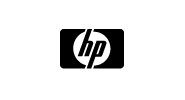Writing queries using Microsoft SQL Server 2008 Transact-SQL (MOC 2778)
Course number HG794S
Delivery method
Remotely assisted instructional learning (RAIL)
Instructor-led training (ILT)
Onsite dedicated training (OST)
Special notes
Elements of this syllabus are subject to change.
Prerequisites
Before attending this course, students must have:
- Logical database design
- Physical database design
- How data is stored in tables (rows and columns)
- Data integrity concepts
- Relationships between tables and columns (primary key and foreign key, one-to-one, one-to-many, and many-to-many)
- Basic knowledge of the Microsoft Windows operating system and its core functionality. For example, how to use Windows Explorer, open and save files, and what a client/server application interaction means
Audience
This course is intended for SQL Server database administrators, implementers, system engineers, and developers who are responsible for writing queries
Course objectives
After completing this course, students will be able to:
- Describe the uses of and ways to execute the Transact-SQL language
- Use querying tools
- Write SELECT queries to retrieve data
- Group and summarize data by using Transact-SQL
- Join data from multiple tables
- Write queries that retrieve and modify data by using subqueries
- Modify data in tables
- Query text fields with full-text search
- Describe how to create programming objects
- Use various techniques when working with complex queries
Course outline
Module 1: Getting Started with Databases and Transact-SQL in SQL Server 2008
Lessons:
- Overview of SQL Server 2008
- Overview of SQL Server Databases
- Overview of the SQL Language
- Syntax Elements of T-SQL
- Working with T-SQL Scripts
- Using T-SQL Querying Tools
Lab: Getting Started with Databases and Transact-SQL in SQL Server 2008
- (Level 200) Exploring SQL Server Management Studio
- (Level 200) Executing Queries in SQL Server Management Studio
- (Level 200) Examining a Database Diagram in SQL Server Management Studio
- (Level 200) Using Excel to Generate a Report from a SQL Server Database
Module 2: Querying and Filtering Data
Lessons:
- Using the SELECT Statement
- Filtering Data
- Working with NULL Values
- Formatting Result Sets
- Performance Considerations for Writing Queries
Lab: Querying and Filtering Data
- (Level 200): Retrieving Data by Using the SELECT Statement
- (Level 200): Filtering Data by Using Search Conditions
- (Level 200) Using Functions to Work with NULL Values
- (Level 200) Formatting Result Sets
- (Level 200) Rewriting Queries for Performance
Module 3: Grouping and Summarizing Data
Lessons:
- Summarizing Data by Using Aggregate Function
- Summarizing Grouped Data
- Ranking Grouped Data
- Creating Crosstab Queries
Lab: Grouping and Summarizing Data
- (Level 200) Summarizing Data by Using Aggregate Functions
- (Level 200) Summarizing Grouped Data
- (Level 200) Ranking Grouped Data
- (Level 200) Creating Crosstab Queries
Module 4: Joining Data from Multiple Tables
Lessons:
- Querying Multiple Tables by Using Joins
- Applying Joins for Typical Reporting Needs
- Combining and Limiting Result Set
Lab: Joining Data from Multiple Tables
- (Level 200) Querying Multiple Tables by Using Joins
- (Level 200) Applying Joins for Typical Reporting Needs
- (Level 200) Combining and Limiting Result Sets
Module 5: Working with Subqueries
Lessons:
- Writing Basic Subqueries
- Writing Correlated Subqueries
- Comparing Subqueries with Joins and Temporary Tables
- Using Common Table Expressions
Lab: Working with Subqueries
- (Level 200) Writing Basic Subqueries
- (Level 200) Writing Correlated Subqueries
- (Level 200) Comparing Subqueries with Joins and Temporary Tables
- (Level 200) Using Common Table Expressions
Module 6: Modifying Data in Tables
Lessons:
- Overview of Transaction
- Inserting Data into Tables
- Deleting Data from Tables
- Updating Data in Tables
Lab: Modifying Data in Tables
- (Level 200) Inserting Data into Tables
- (Level 200) Deleting Data from Tables
- (Level 200) Updating Data in Tables
- (Level 200) Working with Transactions
Module 7: Querying Metadata, XML, and Full-Text Indexes
Lessons:
- Querying Metadata
- Overview of XML
- Querying XML Data
- Overview of Full-Text Indexes
- Querying Full-Text Indexes
Lab: Querying Metadata, XML, and Full-Text Indexes
- (Level 200) Querying Metadata
- (Level 200) Querying XML Data
- (Level 200) Creating and Querying Full-Text Indexes
Module 8: Using Programming Objects for Data Retrieval
Lessons:
- Encapsulating Expressions by Using User-Defined Functions
- Encapsulating Queries by Using Views
- Overview of Stored Procedures
- Writing Distributed Queries
Lab: Using Programming Objects for Data Retrieval
- (Level 300) Creating User-Defined Functions
- (Level 200) Creating Views
- (Level 300) Writing Distributed Queries
Module 9: Using Advanced Querying Techniques
Lessons:
- Considerations for Querying Complex Data
- Querying Complex Table Structures
- Writing Efficient Queries
- Using Different Techniques for Complex Queries
- Maintaining Query Files
Lab: Using Advanced Querying Techniques
- (Level 300) Breaking up a Complex Business Reporting Requirement
- (Level 300) Writing Complex Queries
- (Level 300) Rewriting Complex Queries
- Upis u radnu knjižicu: ne
- Certifikat: ne
- Uvjerenje: ne
- In-house: ne
- Svjedodžba: ne
- Diploma: ne
